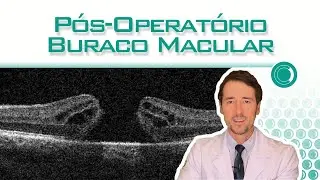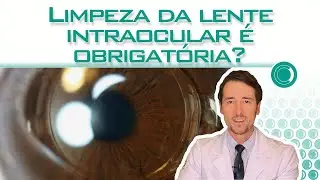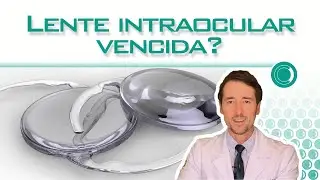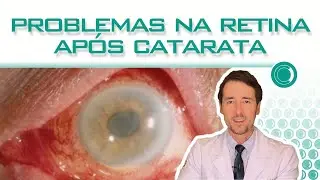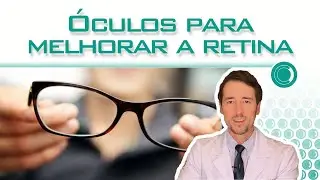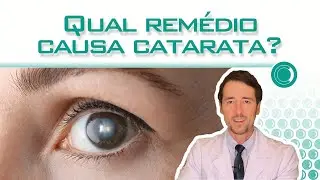Will Everyone Who Has Cataract Surgery Need Lens Cleaning?
Hello, everyone!
This is Dr. Mário Bulla, and welcome to Retina e Vítreo, the most comprehensive retina channel on YouTube. Today we're going to address a very common question among our followers: "Will everyone who has cataract surgery need to have their intraocular lens cleaned?"
First of all, it's important to understand what cataracts are. A cataract is an opacification that occurs in the lens of the eye, our natural lens. When we are born, the lens is completely transparent, allowing light to pass clearly through to the retina. Over the years, the lens can become opaque, making it difficult for light to enter and, consequently, impairing vision.
When the cataract progresses to the point where it significantly interferes with vision, we recommend cataract surgery, better known as phacoemulsification. This procedure involves a small cut in the eye, approximately two and a half millimeters, to remove the opaque lens. In its place, an artificial intraocular lens is implanted, which performs the function of the natural lens, focusing light on the retina so that vision is restored.
During surgery, we preserve a thin layer of the lens called the posterior capsule, where the intraocular lens is positioned. In many cases, it is not the intraocular lens that becomes opaque, but the posterior capsule. Over time, some cells can proliferate in the capsule, causing a new opacity reminiscent of the original cataract.
When we detect this opacity in the posterior capsule, we recommend a procedure called YAG laser capsulotomy. This treatment does not require cutting; a few laser shots are enough to clear the opaque capsule, improving the patient's vision. It's a quick, safe procedure and vision usually starts to improve a few hours later.
But will all cataract surgery patients need this procedure? The answer is no. Studies indicate that between 20% and 50% of patients can develop opacity of the posterior capsule within two to five years of surgery. Other studies suggest that within five years, the need for capsulotomy ranges from 5% to 19%.
With advances in intraocular lens technology, this need has decreased. Current lenses, made of hydrophobic acrylic, are designed to reduce cell migration to the posterior capsule. However, some multifocal lenses, such as bifocals and trifocals, may require cleaning of the capsule even with minimal opacity, due to the high precision required for these lenses.
In short, the need for YAG laser capsulotomy is not a certainty for all patients. With the continuous improvement of intraocular lenses, the incidence of this problem has decreased. However, each case is unique, and it is essential to maintain an open dialog with your doctor to monitor your vision after cataract surgery.
YAG laser capsulotomy is a safe and effective procedure with a low complication rate. If you have any doubts about your vision after cataract surgery, talk to your ophthalmologist. He or she will be able to advise you on the best treatment to ensure the health of your eyes.
Take the opportunity to leave a like, subscribe to the channel and comment with your questions about retinal diseases or ophthalmology in general. Until the next video, here on the Retina e Vítreo channel!
This video and its comments are not a substitute for a doctor's consultation and are for educational purposes only. They should not be used for decision-making purposes, which requires a face-to-face consultation with a specialist doctor.
Author:
Dr. Mário César Bulla
Cremers 28120
Ophthalmologist - Retinologist
www.clinicabulla.com.br
www.especialistaemretina.com.br
Instagram: @retina.bulla
Video URL: • Sempre precisa limpar a lente intraoc...
@Retina e Vítreo
#retina
#ophthalmology
0:00 Will everyone who has had cataract surgery need to have their intraocular lens cleaned?
0:39 What is cataract?
1:08 What is cataract surgery like?
1:50 Why clean the intraocular lens?
















